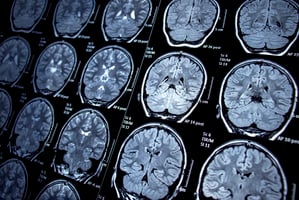Adolescents exposed in the womb to cocaine have a lower volume of gray matter in the brain and show...
Study Suggests Heavy Alcohol Use May Alter Brain Development
 |
Heavy drinkers were classified by time and frequency: one or two drinks every day or three or four drinks at a time one to three times a month, for instance. The authors used magnetic resonance imaging to compare changes in gray and white matter volume in 75 adolescents who became heavy drinkers over the course of the study with 59 who remained light- or nondrinkers. Each underwent multiple MRI scans between ages 12 and 24 and was followed for up to eight years.
Heavy-drinking adolescents showed accelerated gray matter volume reductions in the neocortex and smaller increases in white matter volumes in some structures compared with the nondrinkers, which Squeglia suggested may possibly “contribute to short-term or long-term negative effcts on cognitive, social, and academic functioning.
Causality cannot be determined from this study, she concluded. However, “[t]hese results provide a call for caution regarding heavy alcohol use during adolescence, whether heavy alcohol drinking is the cause or one of many factors in a constellation of causes of these alterations in brain development.”
For more information about adolescents and alcohol, see the Psychiatric News article "Teen Alcohol, Tobacco Use Down, E-cigarette Use Up."
--aml (Image: Nito/Shutterstock.com)





